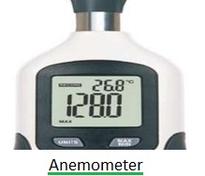Understanding Boundary Scan and the JTEG Standard (IEEE 1149.1)
Advertisement
This article explores the concept of Boundary Scan, a crucial technique for testing electronic circuits, and its associated standard, the JTEG (Joint Test Action Group) IEEE 1149.1. We’ll look at how Boundary Scan overcomes limitations of older testing methods and its applications.
The Challenge with Traditional Testing Methods
Traditional circuit testing methods face several hurdles, especially with increasingly complex modern electronics:
- Functional Testing: It’s difficult to replicate real-world operating conditions in a test setup, making comprehensive testing challenging.
- Structural Testing: Testing individual components or sections doesn’t guarantee that the entire system works correctly. Accessing internal nodes for testing is also difficult.
- Bed-of-Nails Fixtures: These physical fixtures are costly to produce, and establishing reliable connections can be a nightmare with high-density boards.
- Multi-Layer Boards: These boards amplify the complexities of all the above methods.

Figure 1: Boundary Scan Concept
Boundary Scan: A Smarter Approach
Boundary Scan offers a solution by adding dedicated test circuitry to integrated circuits (ICs). Instead of relying on physical test points, it uses special boundary scan registers strategically located.

Figure 2: Boundary Scan Register
Here’s how boundary scan registers function:
- Observation: They can “watch” data flowing through the I/O pins.
- Overriding: They can force test signals onto the circuits.
- Separate Data Chain: The registers are linked in a dedicated serial chain, independent of the normal signal paths in the circuit. Test data is fed into this chain through the
SERIAL INand propagated toSERIAL OUT. In systems with multiple ICs, these chains can be concatenated.
Key Operations of Boundary Scan Registers
The boundary scan registers perform four critical operations:
- Transparent: Data is allowed to pass through the register unaltered, this is used during normal circuit operation.
- Capture: Incoming data is captured and checked without modification.
- **Up
- Serial Shift: Test data is shifted through the registers, allowing the test system to compare the output with the expected results. This process of scanning the data on the boundary is why it is known as Boundary Scan.
The Importance of the JTEG Standard (IEEE 1149.1)
Effective boundary scan testing requires coordination across various teams, including test engineers, design teams, suppliers, and automation software groups. The Joint Test Action Group (JTEG) developed the IEEE 1149.1 standard to ensure clear communication.
Many devices are now manufactured with built-in JTEG-compliant boundary scan capabilities. It’s an efficient way to verify electrical connections between IC pins and the circuit board. The use of boundary scan extends to:
- Multi-Chip Modules (MCMs)
- Stacked-die packages
- Built-in Self Tests (BIST) that verify internal memory and logic.
- System-level testing.
- Field testing (without disassembling the circuit)
- Design debugging.
JTEG Signals and the Test Access Port (TAP)

Figure 3: Boundary Scan Architecture with JTEG Signals
The JTEG standard defines a set of signals, collectively known as the Test Access Port (TAP):
- TDI (Test Data In): Serial data input to the boundary scan chain.
- TCK (Test Clock): Clock signal for the test operations.
- TMS (Test Mode Select): Signal that controls the test mode.
- TDO (Test Data Out): Serial data output from the chain.
- TRST (Test Reset): An optional reset signal for the test logic.
Advantages of Boundary Scan
Boundary Scan offers several advantages:
- Eliminates Test Points: It removes the need for physical test points on the board, avoiding the challenges associated with “bed-of-nails” fixtures.
- Increased Accessibility: It allows testing of internal nodes of the device without direct physical access.
- Simplified Testing: Provides a structured and standardized approach to testing, which is particularly important for complex electronic designs.
- Faster Testing: Automated testing enabled by the boundary scan can reduce testing times and therefore costs.
Boundary scan, guided by the JTEG IEEE 1149.1 standard, represents a significant leap forward in electronic circuit testing, offering greater flexibility, efficiency, and thoroughness than traditional testing methods.
Advertisement
 T&M
T&M 







